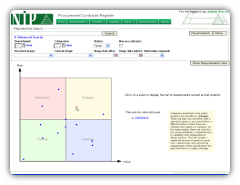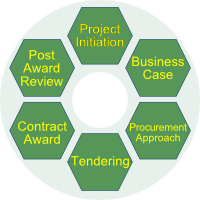PL-cms™ – Procurement Life Cycle Management
PL-cms™, NIP’s Life Cycle Management system, is about gaining control over, and generating strategic perspective into the complete lifespan of Procurement and Commissioning.
Although many powerful and effective operational systems support individual aspects of the Procurement and Commissioning process, the real value comes when the whole process is pulled together and the ‘Do More with Less‘ agenda is implemented:
- Reducing / removing
- duplication of effort
- unnecessary paperwork
- time-consuming meetings
- overheads of effective collaboration
- Transforming the administrative aspects of Professional Processes.
PL-cms™ uses the Active Contracts Register™ as a logical starting point, extending functionality to encompass the stages before and after a contract is actually awarded.
PL-cms™ delivers real control over the Procurement and Commissioning Life Cycle enabling:
- Clear requirements and their expected outcomes to be articulated at the outset
- Accurate categorisation of Requirements and Contracts, revealing opportunities for consolidation
- Available Framework Contracts to be identified and adopted
- Identification of contracts that can be influenced through renegotiation and / or contract alignment
- Management of risk factors using an interactive Kraljic matrix
- Embedded compliance procedures to avoid vexatious challenges
- Decision making support for Executive Management, Procurement Boards and Members
Through mapping, encapsulating, improving and ultimately transforming procurement and commissioning workflows, benefits accrue:
- Embedding operating procedures and enforcing compliance / audit requirements through built-in conformity
- Improving immediacy, accessibility and persistence of process knowledge / best practice – supporting existing professionals and getting new, temporary or replacement staff ‘up to speed’ quickly
- Driving specific process improvement / transformation plans
- Ensuring that the processes required to deliver outcomes are repeatable and scaleable – so that Good Practice is not constrained by resources
- Enabling sustainability and continuous process improvement – ‘Hardwiring’ evidence-based Business Process Change

